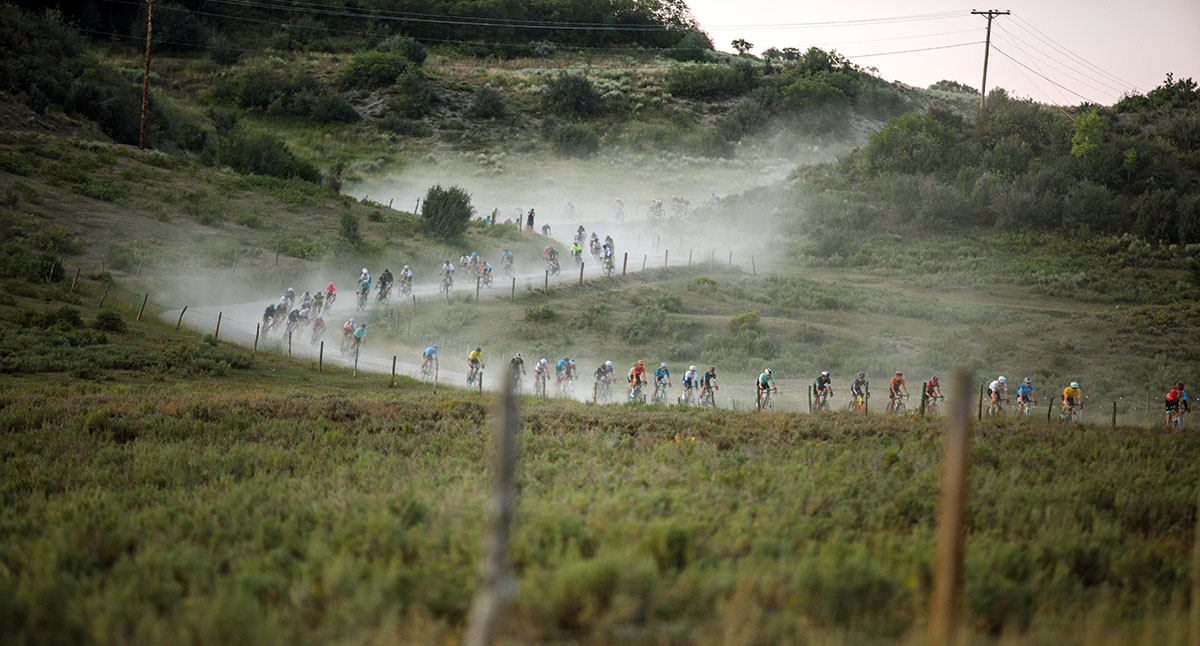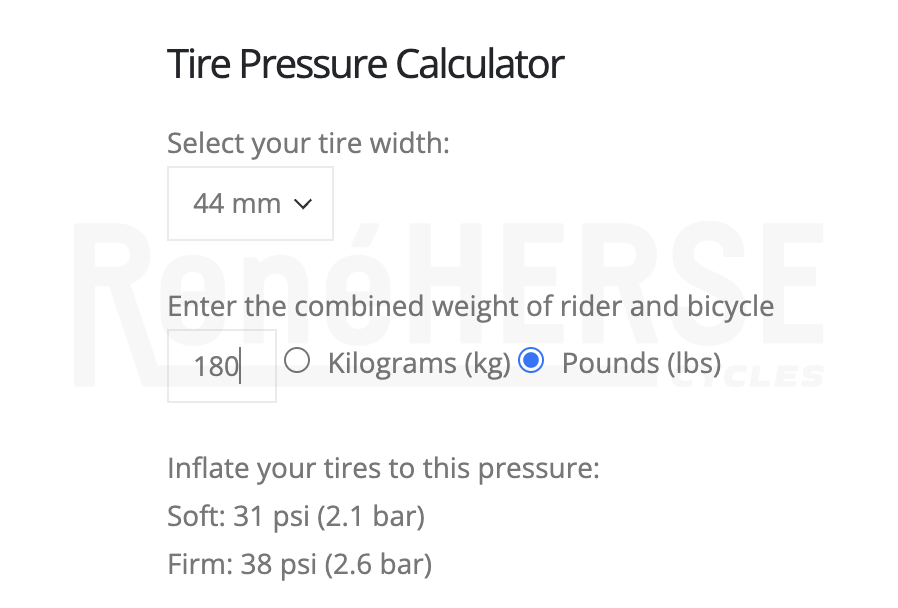Scientific Guide to Choosing Gravel Tires, 2025 Edition
Last year, we published our Scientific Guide to Choosing Gravel Tires. It was a summary of our and others’ research into what makes tires fast, grippy and reliable—and not an advertorial for Rene Herse tires. (We figure that our tires speak for themselves…) It’s been one of our most popular posts.
Science doesn’t stand still, and so we figured it would be good to update the post with the newest findings.
One thing that struck me as I worked on this post is how far we’ve come in just a year. Last year, there was still talk about “too much tire” for a course. Since then, more and more people agree that the widest tire will be the fastest on gravel. Lachlan Morton winning last year’s Unbound 200-mile race with a 2.1″ tire on the front may have something to do with this. (On the rear, his bike’s clearance was limited to 44 mm.)
Is it really that easy? Just slap on the widest tires that’ll fit your bike and go riding or racing? Not quite…
So how do you choose the right width, tread pattern, casing, pressure, etc.? It can seem overwhelming, but in reality it’s simpler than you might think. We’ve distilled the science down to five main points. With this information, you can make informed choices based on your riding style, terrain and preferences. That’s what this guide is about.
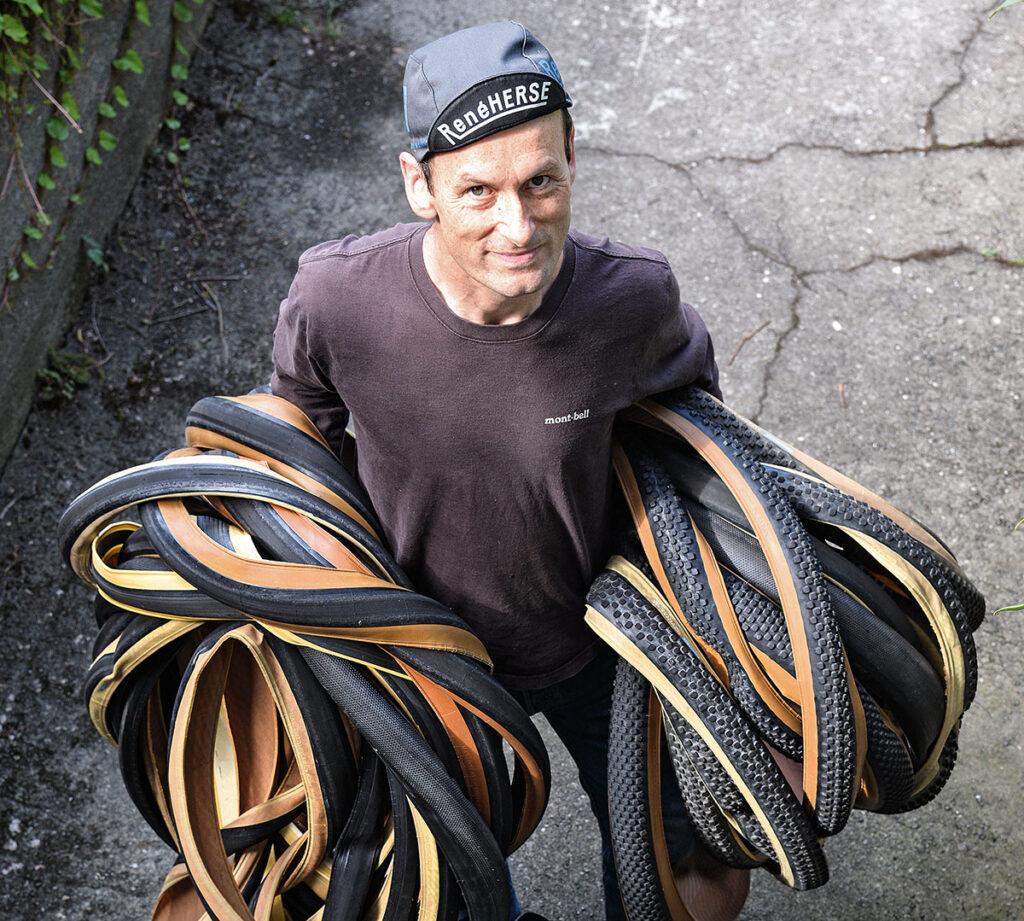
We’ve been testing tires under real-world conditions longer than just about anybody else. With two PhDs between us here on the Rene Herse team, plus a close collaboration with the engineering department of Cal Poly Pomona, you could say that science is in our blood.
When we started our research in 2006, road racers were on 20 or 23 mm tires and inflated them to 125 psi (9 bar) or more. Gravel riding was still in its infancy, and riders debated whether 25 or 28 mm was the optimum width for ‘gravel grinding.’ All this made sense at the time, because that’s what testing on steel drums showed: Pressure matters more than anything. And to get high pressure, you need narrow tires.
At first our results—that wide tires could be fast; that high pressure wasn’t needed for speed—were met with disbelief. Today, they are accepted in the mainstream. Pro road racers now ride wider tires than the ‘gravel grinders’ back then—28 and even 30 mm has become the new standard for road bikes. Modern gravel bikes have clearance for at least 45 mm tires. We’ve come a long way, and Rene Herse Cycles is proud to have been at the forefront of this revolution since the beginning.
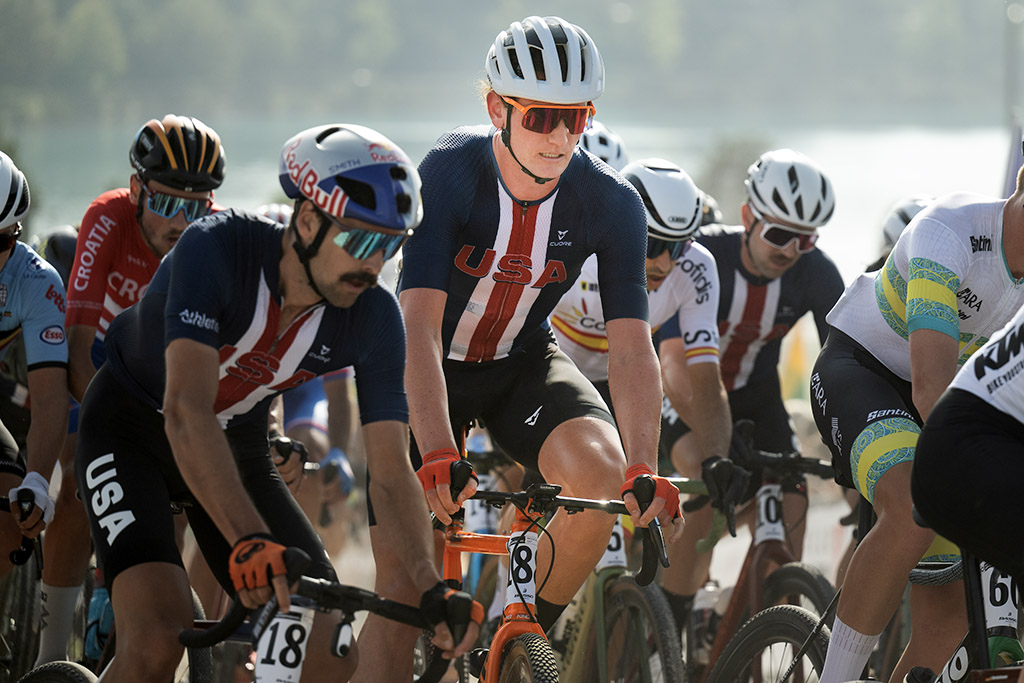
Testing alone can’t tell you everything. It needs to be proven in the real world, where the rubber meets the (gravel) road. That’s why we work with top racers (above is Brennan Wertz at the UCI Gravel World Championships). In racing, there’s no hiding and no excuses. If the science works for them, then—and only then—do we have confidence in our results.
Before we go into the details, here’s a quick summary:
- Start with the widest tire that fits your bike.
- Use the most supple casing you can get away with, given the terrain and your riding style.
- Tread pattern is much less important than most riders think.
- Adjust tire pressure to fine-tune how your bike feels. When in doubt, run lower pressures.
- Choose tires that give you confidence. During your race or adventure, don’t think about your tires, but focus on your ride.
Some of these findings may still seem unfamiliar. A lot of this has only recently been accepted by the mainstream. That means there are still some myths out there. It’ll take some time until everybody is on board. That’s OK—our job as scientists is not to report on the status quo, but to move our knowledge forward: to confirm what we know, but also revise our understanding of things that have turned out to be incorrect.
After hundreds of tests with different methodologies, there isn’t much doubt about what makes tires fast any longer. The riders who work with us have won the biggest races, showing that all this really works in the field, too—and not just in carefully controlled tests.
Let’s look at the factors that affect tire performance, one by one:
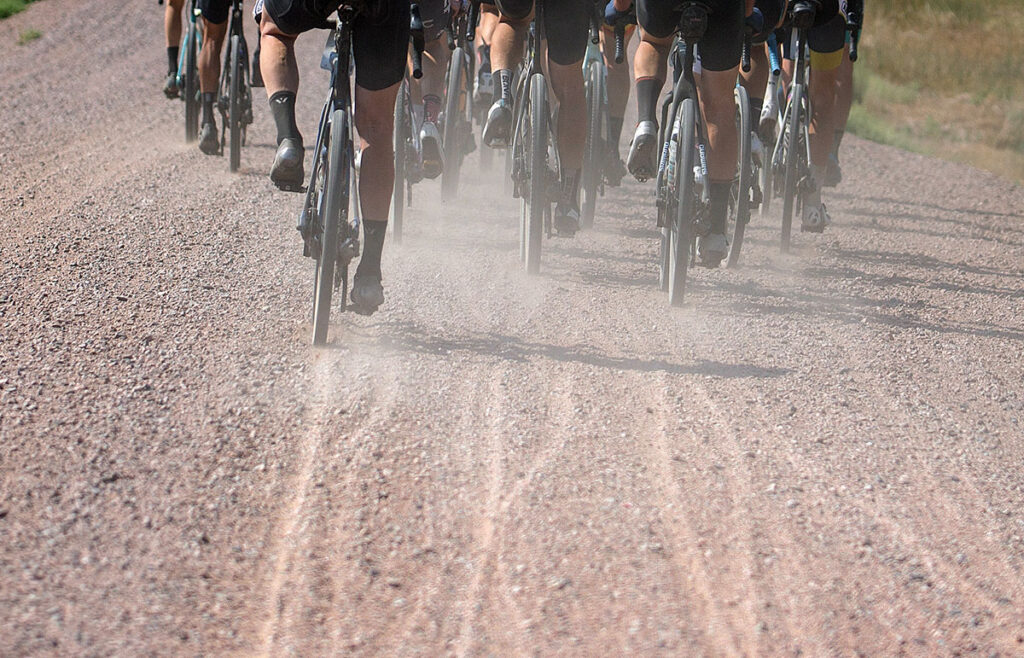
Tire Width
That’s probably the biggest question riders have when choosing tires for an event. You’ve probably heard somebody say: “I don’t want to run too much tire for that course.” Until recently, there was still a misconception that the fastest tire was the narrowest tire you could get away with. On smooth gravel, some riders can ride 32 mm tires, and perhaps even win races on them. But this doesn’t mean that narrow tires are the best choice.
Once you know that vibrations cause suspension losses, you realize that vibrations actually consume power and slow you down. Wider tires can run at lower pressures, which means they transmit fewer vibrations. That makes them faster on all but the smoothest surfaces. Even on smooth surfaces, wide tires aren’t slower than narrow rubber. In other words: When in doubt, run wider tires. They are probably going to make you faster, and they won’t make you slower.
Another factor is flotation: If your bike sinks into the road surface, displacing that material takes energy. There is no free energy: Energy lost anywhere in the system slows down your bike. How much energy is lost when tires sink into gravel? Quite a bit: You’ve probably seen the runaway truck ramps on mountain passes. They use loose gravel to stop semi-trucks that are careening out of control after their brakes fail. A 50-ton truck barreling downhill at 60+ mph has a lot of momentum, and yet the ramps aren’t very long. You lose a lot of energy very quickly if your tires sink deep into loose gravel.
Wider tires displace less gravel. That’s why they roll faster over loose surfaces. Ideally, your tires leave no tracks in the gravel. If you are gouging a deep furrow, you are moving a lot of material—and losing a lot of speed. If you have a power meter, check what happens when the road surface changes from pavement to gravel. If you have to increase your power by more than 10% to maintain the same speed, you’re probably running tires that are too narrow and/or too hard.
Grip is as important as speed. Wider tires at lower pressure conform better to the gravel surface, which improves your grip (and confidence). Supple casings also offer more grip, for the same reason.
Many racers worry about the air resistance of wide tires. The aero penalty is much smaller than most people believe. We’ve tested this in the wind tunnel and in roll-down tests: Even a 6 mm wider tire does not increase wind resistance significantly. As long as your tires are narrower than your bike’s down tube, there’s no reason to worry about wind resistance. (You can read more about aero of gravel bikes in the links at the end of this article.)
The weight penalty of wide tires is small compared to the benefits in speed and grip/traction.
How wide is too wide? A big part of the advantage of wider tires is that you can run lower pressures. You want a soft tire that absorbs vibrations and bumps, rather than jostling bike and rider (and causing suspension losses). But if your tires get too soft for efficient power transfer (see below), then you’ve gone too wide. And at some point, the tires get too wide to fit between high-performance cranks—that’s the reason gravel bikes generally are maxing out at 55-58 mm. Mountain bike cranks are wider, but most riders’ pedaling efficiency suffers with ultra-wide cranks.
Summary: Wider is faster as soon as the surface turns rough, but there are limits to how soft a tire should be.
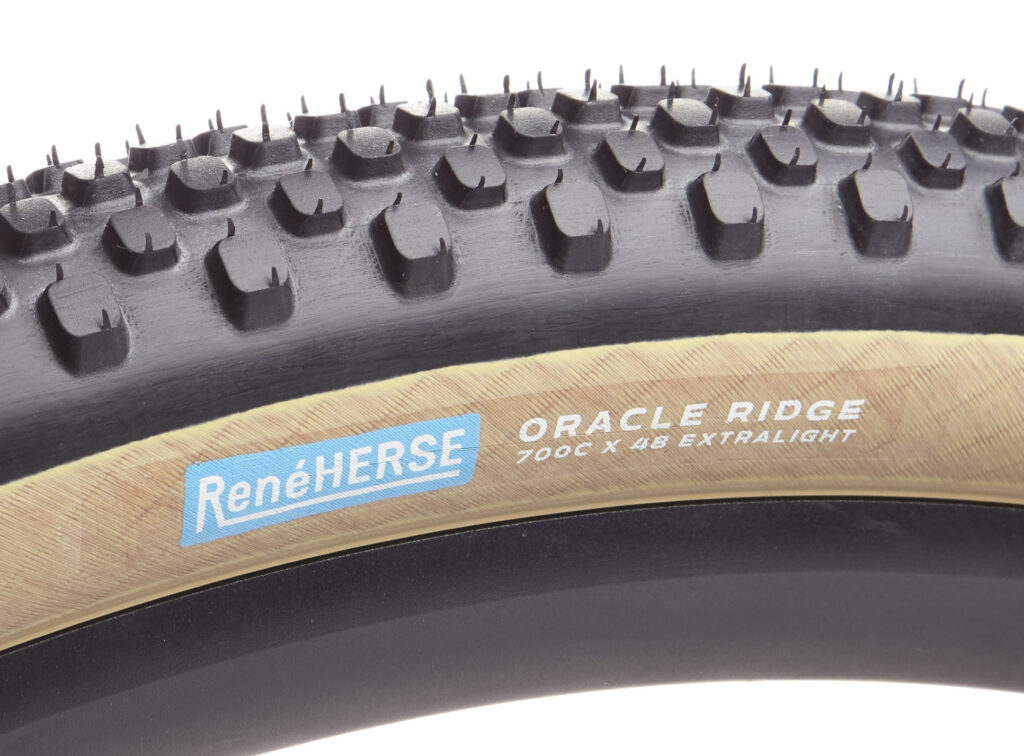
Casing
The biggest factor for tire speed is the suppleness of the casing. This is something many big tire companies don’t like to talk about, because supple casings are expensive. Supple casings are made from fine, high-quality threads, and those cost a lot more than coarse fabrics—and they need to be handled with much more care. Many big factories aren’t equipped to work with these delicate raw materials. (In the finished tire, the threads are encased in rubber that protects them.)
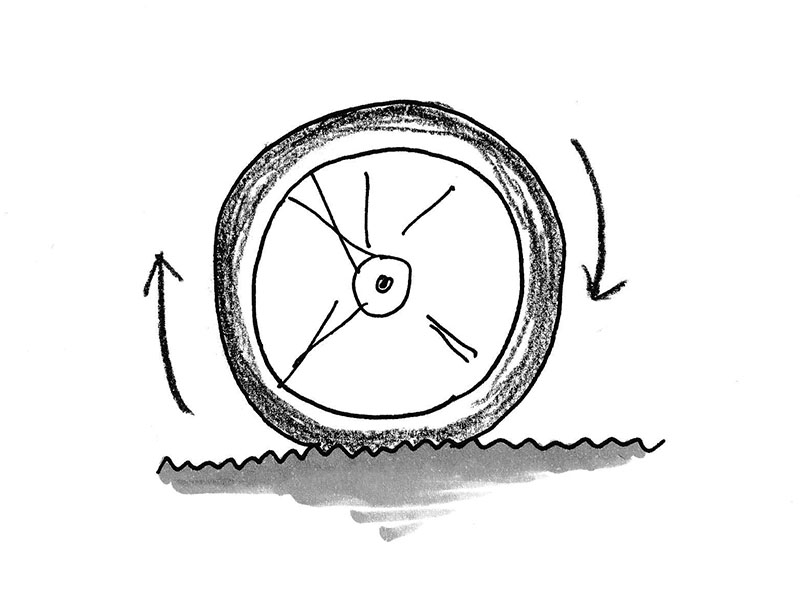
Here’s why supple casings roll so much faster:
- Supple tires require less energy to flex. As the tire rolls, it flattens at the bottom. Flexing the tire requires energy—think squeezing a tennis ball. With a supple casing, you’re not squeezing a tennis ball, but a foam ball. Much easier. When somebody talks about hysteretic losses, that’s what they are talking about.
- Supple tires transmit fewer vibrations. This reduces suspension losses—less energy lost, more speed.
- Less vibration also means more comfort. Being uncomfortable reduces the power you can put out, especially over long distances.
- Supple casings offer better traction, since they conform more closely to the gravel (or road) surface. That means you can carry more speed.
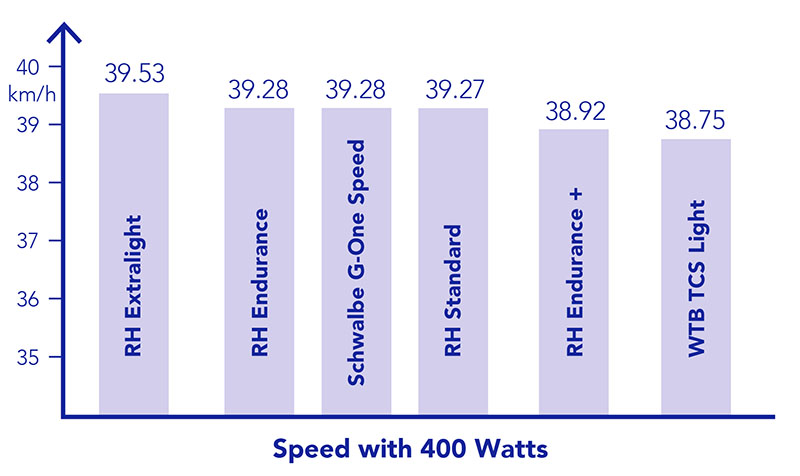
How much difference do supple tires make? The graph above is based on our real-road testing of various tires. Between the fastest and slowest of these gravel tires, you’re seeing a difference of 0.78 km/h (0.5 mph)—with the same power output. That’s huge! Over the 200-mile Unbound, that translates to 15 minutes for the fastest riders, and even more for slower ones.
As you add puncture protection, you lose suppleness and speed. Fortunately, there’s a way to mitigate that: With high-end (and very expensive) raw materials, we can create tires that offer much better puncture protection without losing much speed. Rene Herse Endurance casings use the same ultra-fine threads as our Extralights, but the threads are pushed closer together to create a denser, stronger weave. A high-tech, cut-resistant layer runs from bead to bead. The result: Our Endurance tires roll as fast as the fastest casings from other makers, yet offer better puncture resistance.
Generally, we recommend the Endurance casing for most gravel racing. As Ted King put it, “To win, you first have to finish.” When you’re riding in a big pack, you can’t see where you’re going, and you’ll hit big rocks. We’re proud to say that our Endurance tires have an excellent track record at the toughest of all gravel races, Unbound. Just ask Ted King, Lauren de Crescenzo or Lael Wilcox—none of them have had any flats in many runs over the sharp rocks of the Flint Hills of Kansas. Just last month, Marei Moldenhauer won the grueling 1,300 km Atlas Mountain Race in Morocco on our Fleecer Ridge Endurance tires—without a single flat. (Of course, there is also an element of luck, and we can’t guarantee you won’t flat on Rene Herse tires.)
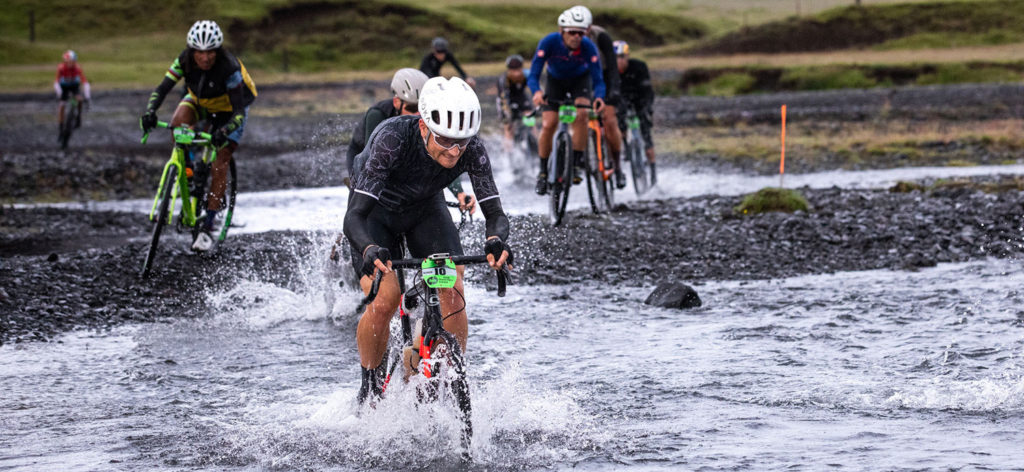
The Endurance Plus casing is even tougher, yet it rolls faster than most OEM tires that come stock on gravel bikes (which have only very limited puncture protection). The Endurance Plus is ideal for riders who tend to be hard on their tires, and for truly rough races, like The Rift in Iceland (above) with its sharp volcanic rocks and many water crossings where you can’t see what your tires are rolling over. (Yes, that race has also been won on Rene Herse tires.)
For rides in small groups and solo time trials, where you can pick the best line and avoid the biggest rocks, the Extralight casing offers amazing speed. It’s not a good choice for riders who tend to have lots of flats, but I’ve ridden and raced on Extralights for over a decade now, without problems. Last year, I rode Unbound XL—350 miles across the Flint Hills of Kansas, much of it at night—on Extralights, without a single flat or other tire issue.
Everybody’s style (and weight) is different, and it also depends on the terrain, of course. Generally, the wider your tires, the lower your pressure, and the less likely you’ll damage a tire. Why? A soft tire just deflects rather than pushing back against the rock that wants to cut the sidewall.
Summary: Supple casings make the biggest difference in speed, but there’s a trade-off in durability. High-quality casings are more durable and faster.
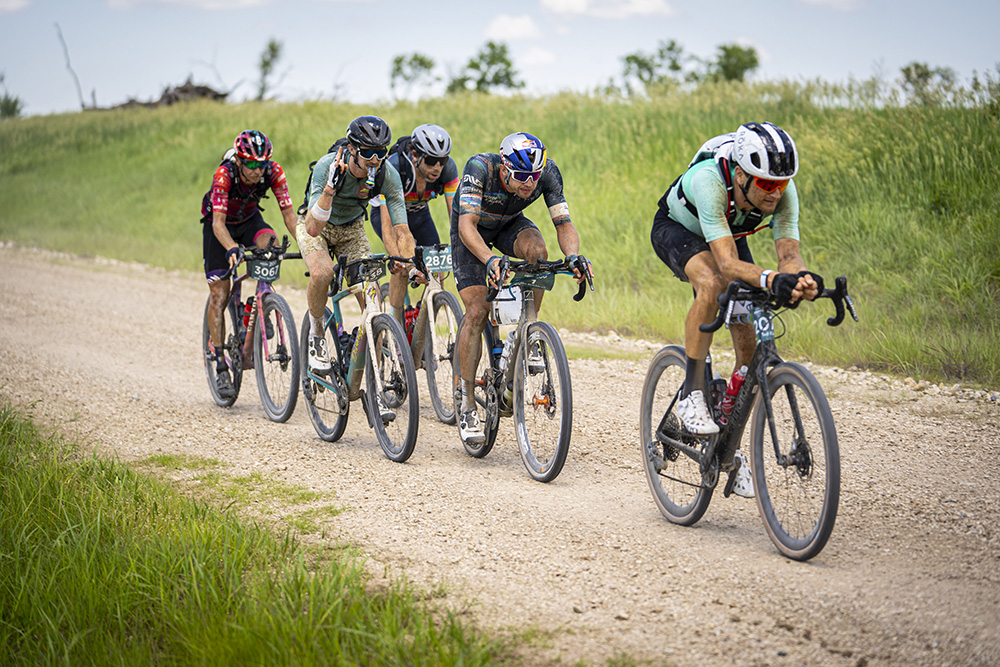
Tread pattern
Tire treads are easy to see, and riders tend to focus on them. Many tire companies offer a large variety of tread patterns for every imaginable condition. It’s an easy way to sell more tires. Do we really need bring a quiver of tires to each event, so we can change tires if last year’s hardpack has been replaced by a new spread of loose gravel, or if it rains and there might be mud?
Rene Herse would also love to sell you multiple sets of tires, but the honest answer is: On most gravel surfaces, tread makes very little difference. Your bike slides because surface rocks slide on the rocks below them. The grip of your tires on the uppermost rock layer makes little difference. Ever since Ted King (above at Unbound) and Lauren de Crescenzo started racing on Rene Herse slicks, this knowledge have been gaining some traction (pun intended). To get more grip, run wider tires that have a larger contact patch.
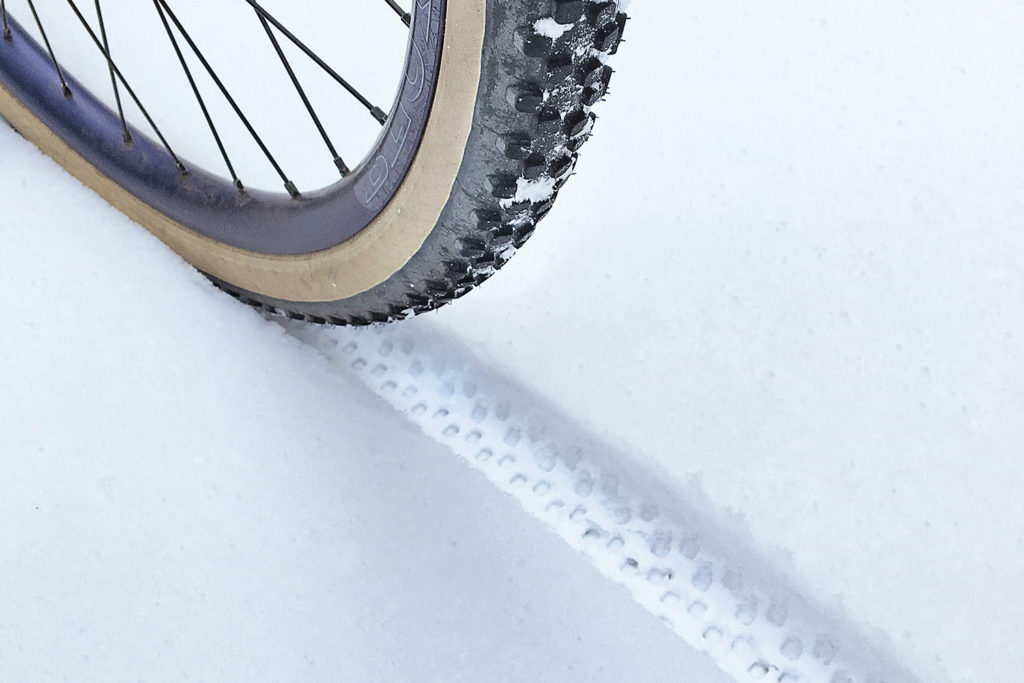
Knobs work when they have something to push against. In mud and snow, knobbies greatly improve traction. As a rule of thumb, knobs work when the imprint of the tire tread is visible on the road surface (above). To work well, knobs need to be spaced far apart, so the tire doesn’t clog up with mud or snow. High speed also helps with self-cleaning the tread, as it increases the centrifugal force that pulls the mud away from the tire.
Many gravel tires have very small knobs. Intuitively, that may make sense—you don’t want ‘too much tire’—but that’s not how it works: Small knobs squirm and flex more, which costs energy. Small knobs are actually slower than large knobs. And small knobs are usually too densely spaced to improve traction on loose surfaces.
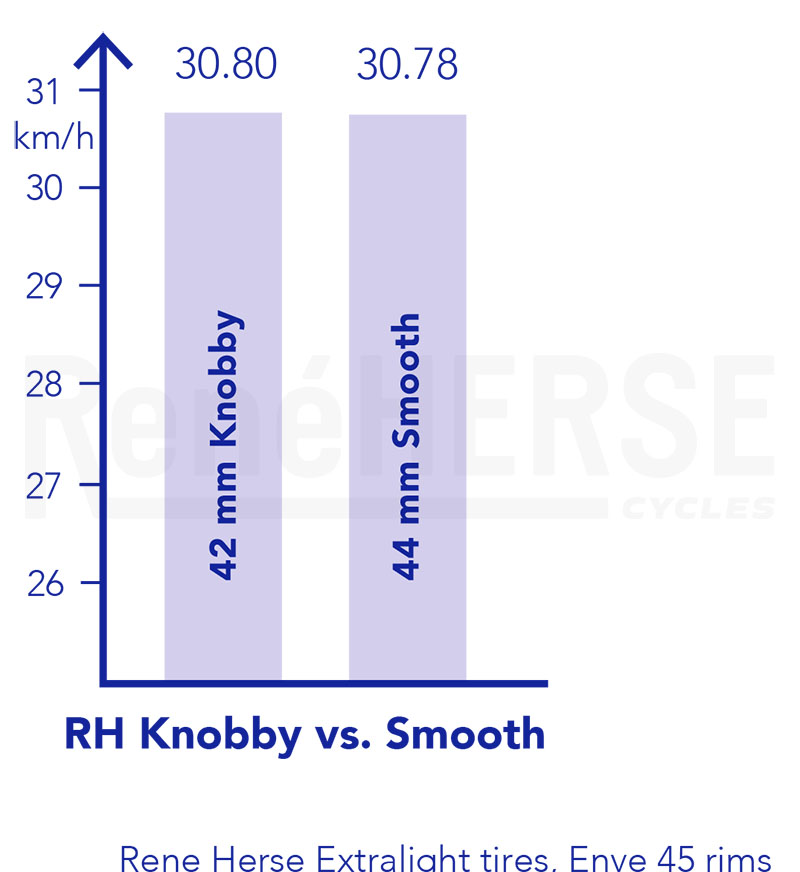
Can you make a knobby that isn’t slow? That’s the question we asked ourselves. To get there, we’ve used a radically different approach from other tire makers. Most knobby tires are designed by adding knobs to the surface of a smooth tire. We went the other way: We started with a slick tire. Using computer modeling, we then cut away some of the tread until only knobs remain—but with enough material remaining to preserve the grip and speed of the original slicks. That’s the secret behind Rene Herse dual-purpose knobbies. That’s how they roll and corner like slicks. The data supports this: Even on pavement and hard surfaces (above), there is no measurable difference in speed between our dual-purpose knobbies and our smooth all-road tires—at least at power outputs up to 400 watts.
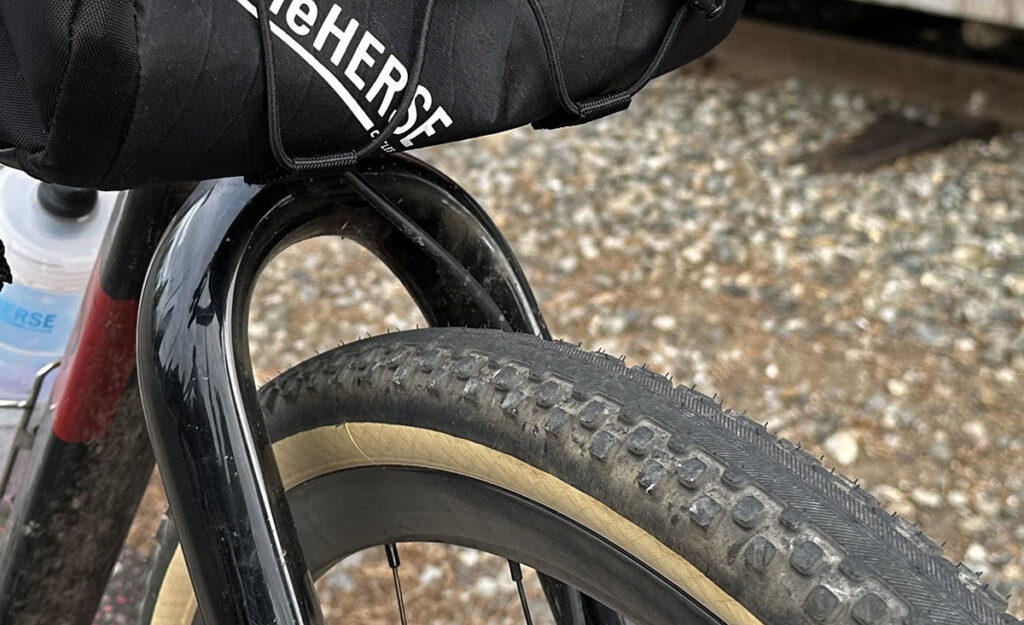
What about fast-paced rides or races with many attacks that require power outputs of more than 400 watts? At that point, even the big knobs of our dual-purpose knobbies squirm a little and lose some of their ultra-low rolling resistance. For those rides, we’ve developed our semi-slicks. Unlike other semi-slicks, which tend to be neither particularly fast, nor particularly grippy, we’ve created a totally new type of semi-slick. The first row of side knobs is anchored on the center tread, making them stiffer. Less flex means better power transfer and lower rolling resistance. We kept the big knobs on the side that work so well on our knobbies. The radius of the tread is significantly larger than that of the casing, so the tire corners like a much wider tire. (This also keeps the center tread thin and supple and the tire profile round for better cornering.)
To summarize thread patterns:
- Rene Herse slicks: ideal for pavement, hardpack, dry gravel.
- Rene Herse dual-purpose knobbies: for rides where you may encounter mud, snow or loose gravel. You won’t lose speed on the paved portions of the ride, and you’re ready for anything the course may throw at you.
- Rene Herse semi-slicks: for rides and races with constant attacks, where you’ll put out more than 400 watts, yet still need the traction of knobs.
Should you run different tread patterns front-to-rear? Mountain bikers often use a more aggressive tire with knobs on the front, and a relatively smooth tire on the rear. This combination makes sense at low speed in technical terrain, where the front tire turns more sharply and needs more traction. At high speed on gravel, the front wheel remains relatively straight even when cornering, and both tires need equal amounts of grip. On surfaces where knobs do help, you need them on both wheels. However, you could run knobbies on the front and semi-slicks on the rear, where the power transfer is happening.
Summary: On dry gravel, tread patterns make no difference in grip. You can run smooth tires, but you also don’t give up speed if you run Rene Herse semi-slicks or even dual-purpose knobbies. For rides that may encounter mud or snow, run knobbies or semi-slicks with large, widely spaced knobs.
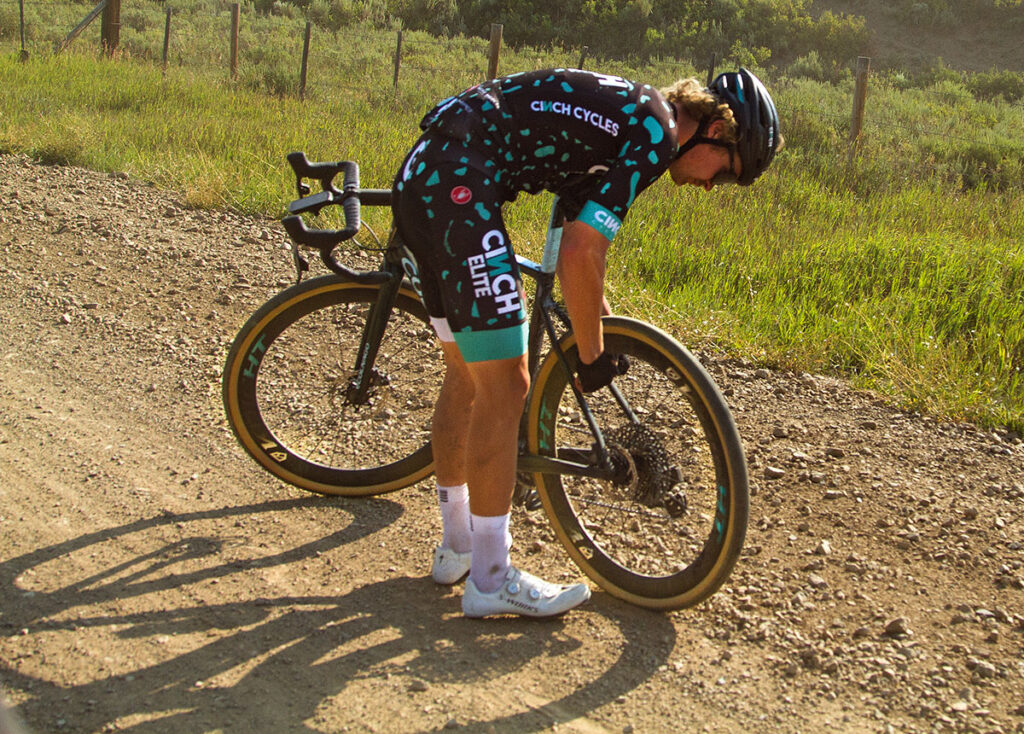
Tire Pressure
Tire pressure is extremely important. It’s one of the easiest factors to change—and one of the most difficult to get right. For many pros, tire pressure is a closely guarded secret, because getting the pressure just right gives them an advantage over the competition.
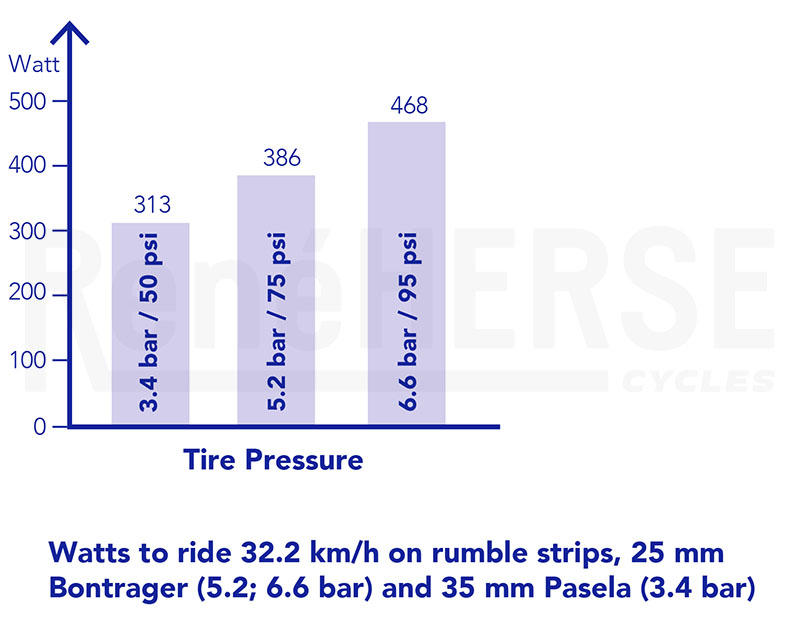
The basic physics are simple enough: On rough roads, lower pressure has less resistance. That’s because softer tires transmit fewer vibrations. It’s as simple as that. The effect is quite significant: On really rough surfaces (rumble strips), too-high pressures can cost you more than 150 watts (above). Compare that to aero wheels, which save up to 2 watts (according to Zipp for their ultra-wide and aero-optimized 303 XPLR wheels). I’m not saying that you shouldn’t buy aero wheels, but you definitely should spend some time figuring out the right tire pressure. (Side note: We ran these tests before we made our own tires, that’s why you see some very ‘non-racing’ tires. There simply weren’t any wide high-performance tires back then.)
Lower pressure also improves traction, because it enlarges the tire’s contact patch and allows the tread to conform to the surface.
How do you determine the perfect tire pressure? There are many tire pressure calculators, and the recommendations can vary a lot. That’s because most of these calculators are based on ‘educated guesswork,’ as one engineer once put it, rather than actual science. The Rene Herse Tire Pressure Calculator uses data from our real-road rolling resistance measurements and a large study of how tires flex under different rider weights. That means it gives consistent results over the entire range of tire widths and rider weights. (Other factors such as rim width, etc., have negligible effects, so you don’t need to worry about them.)
The calculator gives you the two tire pressures that result in the lowest rolling resistance. (Why two different pressures? Because the factors of tire flex and vibration are non-linear—details are explained in the pressure calculator’s documentation.)
For gravel, start with the ‘soft’ pressure. From there, experiment with different pressures to see how hard or soft a tire you need on your bike to put down the most power. That’s highly personal and not something any software can calculate.
Stronger riders often prefer (slightly) higher pressure. If your tires flex excessively during sprints and out-of-the-saddle climbs, it’s hard to put down power. (That’s the same as suspension bob on mountain bikes.) Riders who prefer constant efforts can often ride lower pressure. If you’re planning a time trial for an FKT, you can run significantly less air in your tires. Your tire pressure also depends on the terrain: You don’t want to bottom out and risk damaging your tires and rims.
The optimal tire pressure is very personal. Experiment to figure out what works for your weight, your power output, your riding style, and your terrain. If you run wide tires, you can easily adjust their stiffness by adding or letting out some air.
Summary: Lower pressure rolls faster on rough terrain, but just as important is the feel of your bike. Tune your tire pressure so your bike works best with your pedal stroke.
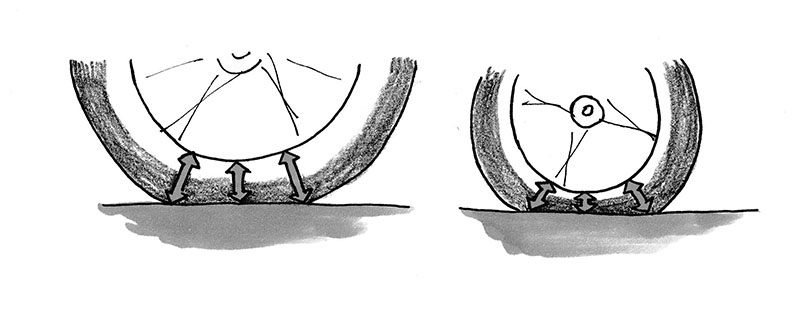
Wheel Size
It seems like a no-brainer: Bigger wheels roll better over road irregularities, don’t they? This would be true if the wheels were solid discs. But we run pneumatic tires (with air in them) for a reason: They absorb irregularities without lifting the bike. That’s the ‘secret’ of a bicycle’s speed. That’s why we put up with the hassles of air in our tires in the first place. Basically, a pneumatic tire is flat at the bottom, and its diameter doesn’t make a difference when it comes to rolling over surface irregularities. (Large obstacles like those encountered in mountain biking may be a different matter—we’re talking about gravel roads here.)
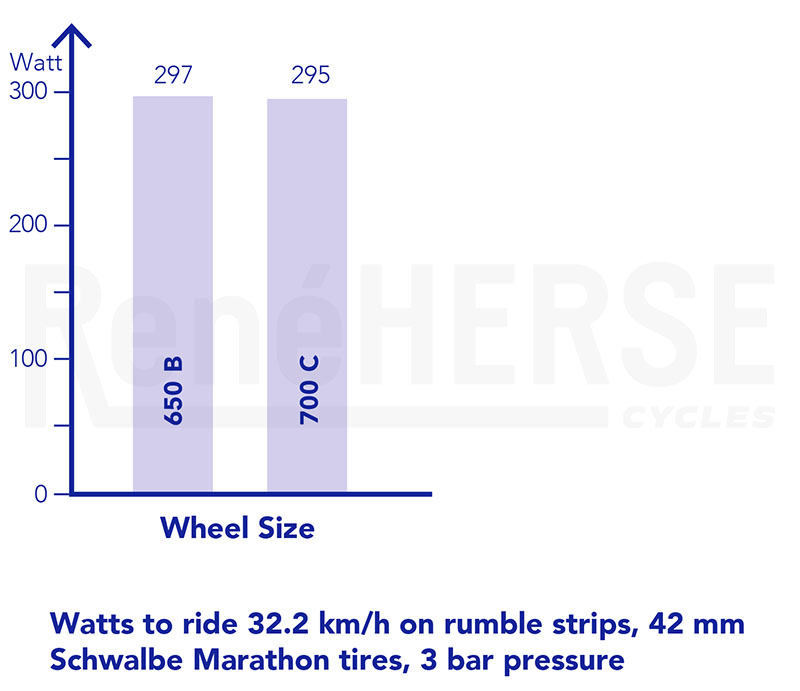
That’s not just theory: Our testing found that the most common wheel sizes, 650B and 700C, roll at the same speed over bumpy terrain (above). We tested this on highway rumble strips. (Rumble strips are grooves cut into the edge of the pavement to alert sleepy drivers who are drifting off the road.) If larger wheels had an advantage, it would show on these rumble strips: During our tests, our bike wheels hit 15 mm-tall (0.6 in) bumps 60 times per second. That’s as extreme as it gets!
Our testing showed no advantage of larger wheels. (We ran the same tires and the same pressure for both wheel sizes, of course. The tiny differences in the data above are not statistically significant.)
The reality is that most bikes today use 700C wheels, and they work really well. But if you’ve got a set of 650B wheels, there’s no reason to ‘upgrade’ to 700C. And some of us prefer smaller wheels, because they make the bike more nimble and easier to rock from side to side when climbing or sprinting out of the saddle.
Summary: Don’t sweat wheel size. It makes no difference for your speed on gravel.
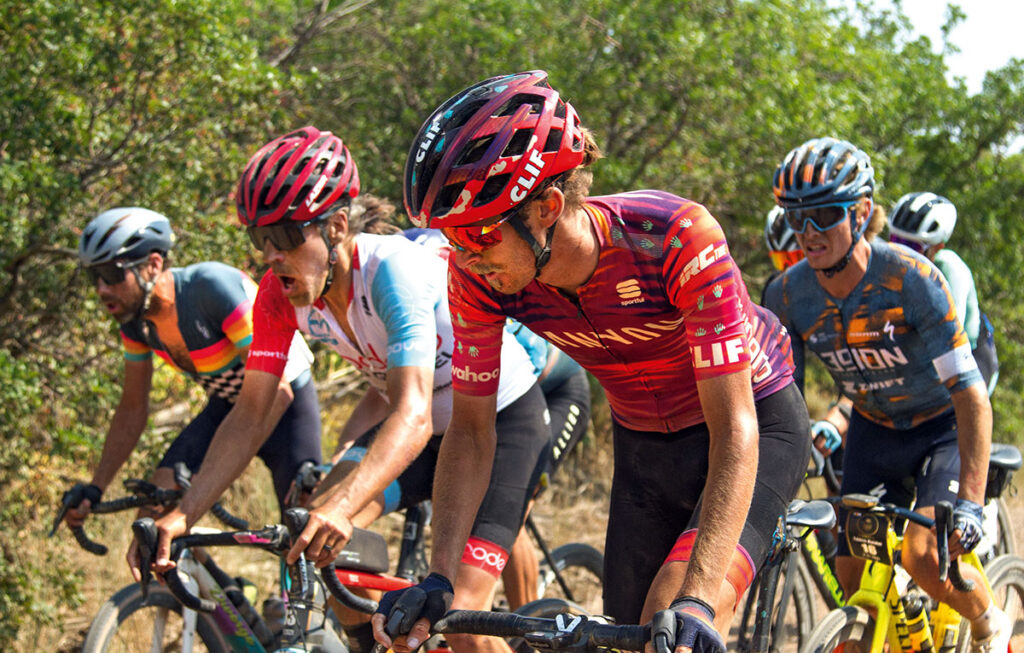
Confidence
All the science in the world doesn’t mean much if you have doubts about your bike. When you are at the limit and digging deep, you need to have full confidence in your equipment. That’s why Ted King’s strategy is simple: “I look at the tires other racers use at an event and go up one size.” That way, Ted doesn’t need to worry that the theory overlooks some crucial factor, and that he’ll be outgunned because he made the wrong tire choice.
If you run Extralight casings and then constantly worry about your tires suffering a sidewall cut, you should choose Endurance casings instead. On the other hand, knowing that you are on faster tires than the riders around you can give you the confidence to dig deep and stay with a group, or even attack. That’s something only you can decide!
Summary: More than anything else, make sure you are comfortable with your tire choice.
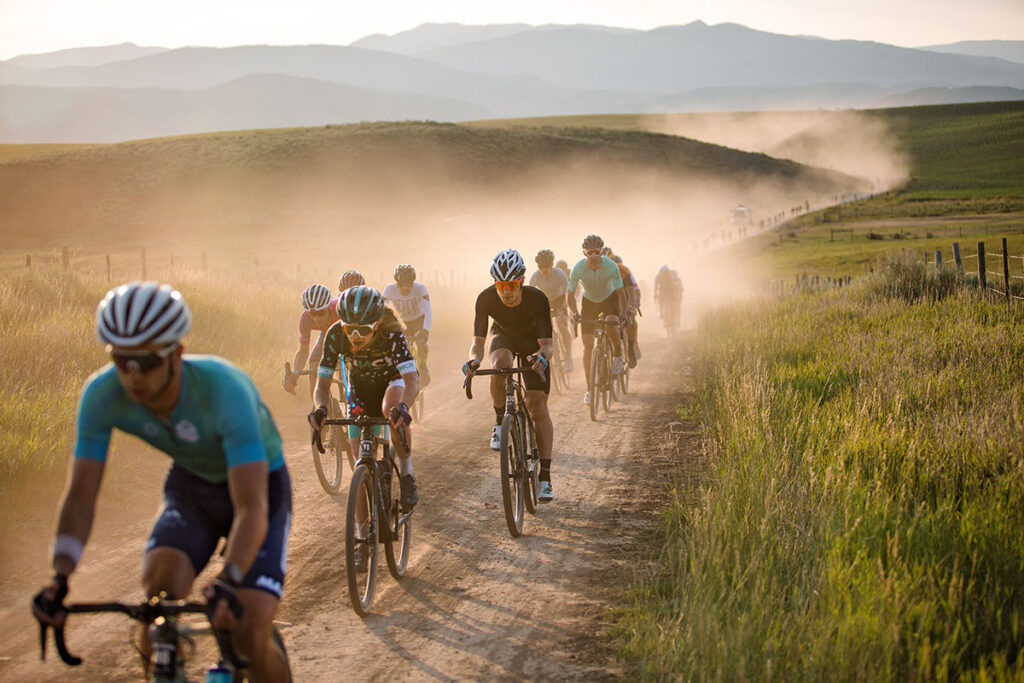
Conclusion
In practice, it makes sense to start by minimizing resistances, before adjusting factors to dial in the feel of the bike based on your wants and needs. Here is a summary of this strategy:
- Start with the widest tire that fits on your bike.
- Use the most supple casing you can get away with, given the terrain and your riding style.
- Don’t worry about tread patterns. When in doubt, choose a dual-purpose knobby or Rene Herse semi-slicks.
- Optimize your tire pressure to suit the terrain and your riding style. When in doubt, run lower pressures.
- Once your race or adventure starts, don’t think about your bike. Focus on the ride!
Viewed like that, it’s really quite simple. And that’s the beauty of cycling (and science): It doesn’t need to be complicated.
More Information:
- Aerodynamics of gravel bikes
- Results of Bicycle Quarterly’s tire tests
- Our book The All-Road Bike Revolution explores how bicycles really work.
- Supple tires in the Rene Herse program
- Rene Herse Tire Pressure Calculator


